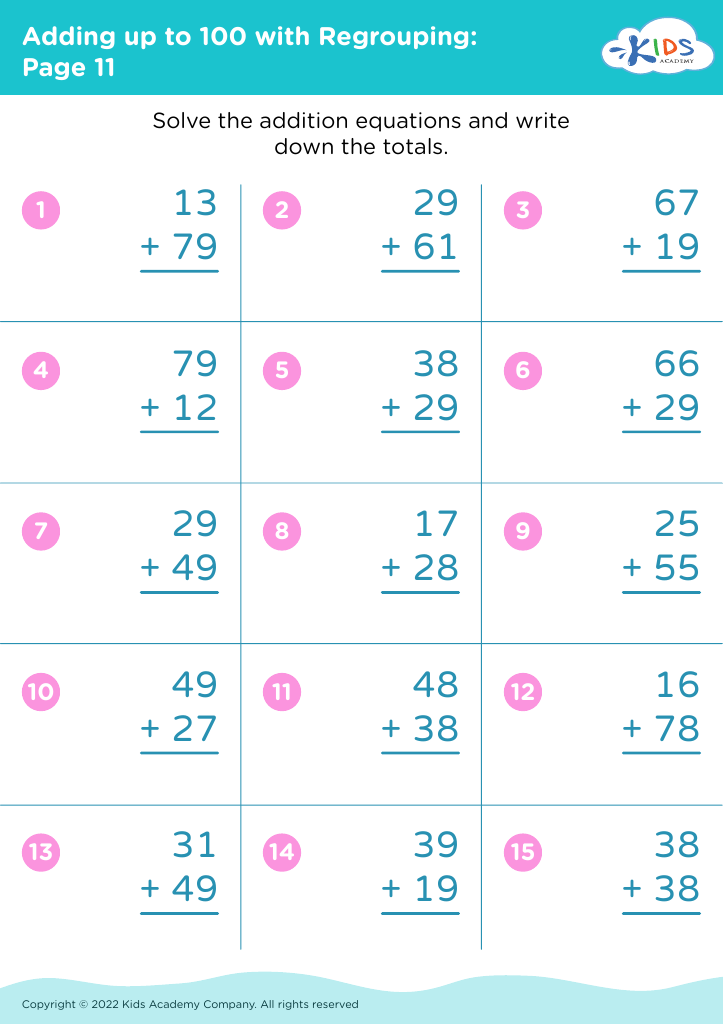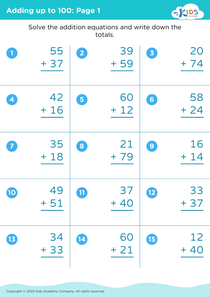Color Identification Adding up to 100 with Regrouping Worksheets for Ages 3-8
3 filtered results
-
From - To
Enhance your child's learning experience with our "Color Identification Adding Up to 100 with Regrouping Worksheets" designed for ages 3-8. These engaging worksheets combine essential math skills with fun color identification activities, helping young learners grasp the concept of regrouping while exploring the vibrant world around them. Perfect for reinforcing addition skills, our interactive format keeps children motivated as they practice adding numbers up to 100. Each worksheet promotes critical thinking and lays a strong foundation in early math understanding. Download today and watch your little ones develop confidence in their math abilities while enjoying the colorful journey of numbers!
Color identification and mastering addition up to 100 with regrouping are essential skills that lay the groundwork for children's cognitive and social development. For children aged 3-8, colors are often their first exposure to the concept of categorization and differentiation, which stimulates creativity and helps build their vocabulary. Understanding colors also aids in developing observation skills and can enhance emotional expression, as children learn to associate different colors with various feelings and concepts.
On the other hand, addition with regrouping challenges children to understand place value, critical thinking, and problem-solving. It promotes mathematical reasoning and encourages a growth mindset, as students learn to tackle complex problems incrementally. Teaching these skills together allows educators to create vibrant, engaging activities that make learning enjoyable. When children learn to identify colors within math contexts—like counting colored objects to sum to 100—they combine visual and numeric literacy in powerful ways.
By focusing on these skills early, parents and teachers cultivate a love for learning, foster resilience in overcoming challenges, and ultimately prepare children for future academic success. This multifaceted approach to teaching not only enhances children’s mathematical abilities but also enriches their overall learning experience.















